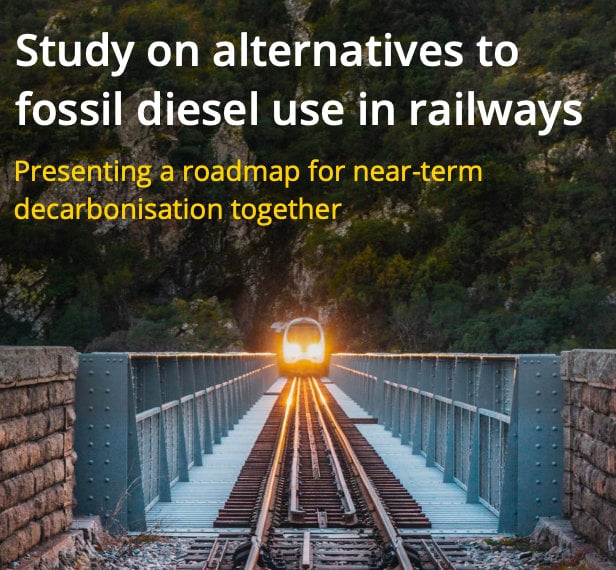railway-international.com
02
'23
Written on Modified on
Rail transport is a key tool for reducing carbon emissions
The AERRL study on alternatives to fossil diesel use in railways concluded that the entire rail sector needs to design a common strategy to address the challenge of transitioning from fossil diesel.

AERRL is proud to share an initial roadmap of technology alternatives for the years to 2050, based on results of a study conducted by eolos. In terms of climate challenges, the European Commission’s Green Deal sets a clear target: by 2050, transport emissions must fall by 90% compared to 1990 levels. Responsible for less than 1% of total European CO2 emissions, rail is part of the solution and is committed to growing its market share. Indeed, freight traffic is forecast to rise 100% by 2050. But rail also needs to design a process for phasing out diesel fuel if it is to remain the most sustainable form of land transport.
Launched in July 2022 and carried out by eolos, an industrial consulting company that helps the rail sector to embed environmental sustainability into business operations, the study examines the EU regulatory framework and certain national strategies, providing a preliminary assessment of technology alternatives. The qualitative and quantitative research – including extensive stakeholder consultations and workshops with AERRL members – produced unique insights into technological maturity as well as infrastructure and supply chain readiness.
Extract from the report AERRL Study on Alternatives to fossil diesel use in railways, December 2022
“While electrification remains the most efficient solution from a holistic perspective, complementary solutions can help to accelerate decarbonisation. HVO is rated as an immediate candidate. It can reduce CO2 emissions by 85 to 90 percent and is easy to implement. Obstacles due to higher taxation can and should be adjusted by future regulation. RNG and Ammonia ICE are considered short- to medium-term options, though several operational challenges remain.
Hydrogen has a high energy density (per kilogram), but "green production" is still very limited and requires high expenditure. It is an option for applications where no other solution is available (e.g. long non-electrified routes) and after substantial infrastructure improvements are achieved. Though major problems remain, battery technology is a solution for the rail sector. Especially Dual-Mode battery/electric trains combined with partial electrification for the longer term could become a game-changer.
To enable the sustainable transition of the rail sector, the different stakeholders need to come together in a “freight transport system for efficiency” organised either by the Commission or an appointed actor in the field. The investments between rolling stocks and infrastructure need to be balanced.
To achieve maximum leverage for industrial decarbonisation, the rail sector should be, after pipelines, the first choice for green hydrogen transport. With such a position in a new supply chain, the rail sector can increase its freight market share and provide safe and reliable low carbon-emission energy to today’s most emissive industries.”
The key conclusions will be presented during a webinar, aiming to initiate a process leading to an alignment of the various actors’ positions and the establishment of an action plan for the sector. Registration is required for the AERRL Webinar on Thursday 4 May at 12.00-13.15 UTC-1 (Brussels time).
The report is available on the AERRL’s website: AERRL Study Report.
www.aerrl.com

